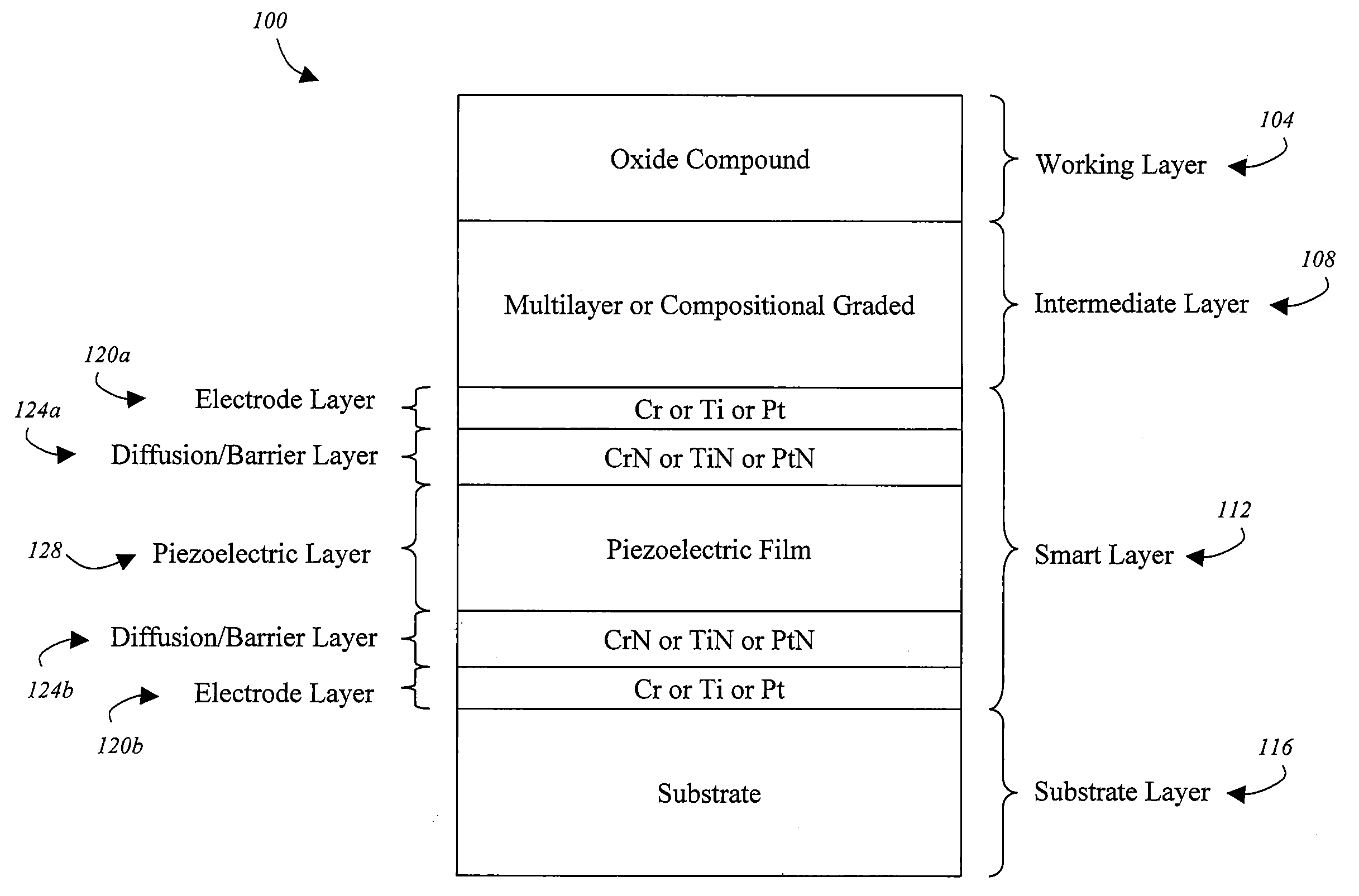Piezoelectric sensor based smart-die structure for predicting the onset of failure during die casting operations
a smart-die structure and sensor technology, applied in the direction of force sensors, instruments, force/torque/work measurement apparatus, etc., can solve the problems of long-term detrimental effect on the properties of the die-protecting layer, small technology available to predict structural problems of dies, and poor crystallinity, so as to increase the piezoelectric response of the piezoelectric film, the density of the aln thin film is reduced, and the piezoelectric film is increased.
- Summary
- Abstract
- Description
- Claims
- Application Information
AI Technical Summary
Benefits of technology
Problems solved by technology
Method used
Image
Examples
Embodiment Construction
[0031]With reference now to FIG. 1, an exemplary smart die 100 coating architecture will be described in accordance with at least some embodiments of the present invention. The die 100 structure may include a working layer 104, an intermediate layer 108, a smart layer 112, and a substrate layer 116. One or more of the layers may be deposited on the substrate layer 116 via a thin film deposition process as will be discussed in further detail below. The working layer 104 is generally the outermost layer of the die 100. Thus, the working layer 104 is generally the layer of the die 100 that contacts the material that is being die-cast. The working layer 104 should preferably be composed of a material that interfaces well with the material being die-cast. For example, an oxide compound may be used for die-casting operations where aluminium or similar metals are die-cast. A first surface (e.g., the outermost surface) of the working layer 104 may be the side that physically contacts the ma...
PUM
| Property | Measurement | Unit |
|---|---|---|
| temperatures | aaaaa | aaaaa |
| electrical resistivity | aaaaa | aaaaa |
| thickness | aaaaa | aaaaa |
Abstract
Description
Claims
Application Information
 Login to View More
Login to View More - R&D
- Intellectual Property
- Life Sciences
- Materials
- Tech Scout
- Unparalleled Data Quality
- Higher Quality Content
- 60% Fewer Hallucinations
Browse by: Latest US Patents, China's latest patents, Technical Efficacy Thesaurus, Application Domain, Technology Topic, Popular Technical Reports.
© 2025 PatSnap. All rights reserved.Legal|Privacy policy|Modern Slavery Act Transparency Statement|Sitemap|About US| Contact US: help@patsnap.com


